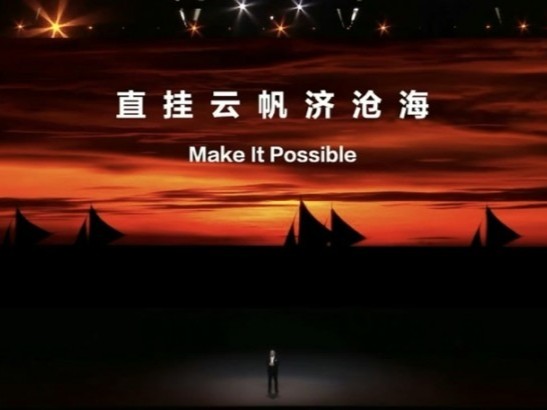|
go-ethereum中go-event库的使用 github.com/ethereum/go-ethereum/event 包实现了一个事件发布订阅的库,使用接口主要是 event.Feed 类型,以前还有 event.TypeMux 类型,看代码注释,说过时了,目前主要使用 Feed 类型。 package main import ( "fmt" "sync" "github.com/ethereum/go-ethereum/event" ) func main() { type someEvent struct{ I int } var feed event.Feed var wg sync.WaitGroup ch := make(chan someEvent) sub := feed.Subscribe(ch) wg.Add(1) go func() { defer wg.Done() for event := range ch { fmt.Printf("Received: %#v\n", event.I) } sub.Unsubscribe() fmt.Println("done") }() feed.Send(someEvent{5}) feed.Send(someEvent{10}) feed.Send(someEvent{7}) feed.Send(someEvent{14}) close(ch) wg.Wait() } 通过调用 event.Feed 类型的Subscrible方法订阅事件通知,需要使用者提前指定接收事件的 channel,Subscribe 返回 Subscription 对象,是一个接口类型 : type Subscription interface { Err() // returns the error channel Unsubscribe() // cancels sending of events, closing the error channel } Err() 返回获取error 的channel,调用Unsubscribe()取消事件订阅。事件的发布者调用 Send() 方法,发送事件。 可以使用同一个channel实例,多次调用Feed 的Subscrible()方法: package main import ( "fmt" "sync" "github.com/ethereum/go-ethereum/event" ) func main() { var ( feed event.Feed recv sync.WaitGroup sender sync.WaitGroup ) ch := make(chan int) feed.Subscribe(ch) feed.Subscribe(ch) feed.Subscribe(ch) expectSends := func(value, n int) { defer sender.Done() if nsent := feed.Send(value); nsent != n { fmt.Printf("send delivered %d times, want %d\n", nsent, n) } } expectRecv := func(wantValue, n int) { defer recv.Done() for v := range ch { if v != wantValue { fmt.Printf("received %d, want %d\n", v, wantValue) } else { fmt.Printf("recv v = %d\n", v) } } } sender.Add(3) for i := 0; i < 3; i++ { go expectSends(1, 3) } go func() { sender.Wait() close(ch) }() recv.Add(1) go expectRecv(1, 3) recv.Wait() } 这个例子中, 有三个订阅者, 有三个发送者, 每个发送者发送三次1, 同一个channel ch 里面被推送了9个1。 ethereum event 库还提供了一些高级别的方便接口, 比如event.NewSubscription函数,接收一个函数类型,作为数据的生产者, producer本身在后台一个单独的goroutine内执行, 后台goroutine往用户的channel 发送数据: package main import ( "fmt" "github.com/ethereum/go-ethereum/event" ) func main() { ch := make(chan int) sub := event.NewSubscription( func(quit for i := 0; i < 10; i++ { select { case ch case <-quit: fmt.Println("unsubscribed") return nil } } return nil }) for i := range ch { fmt.Println(i) if i == 4 { sub.Unsubscribe() break } } } 库也提供了 event.SubscriptionScope 类型用于追踪多个订阅者,提供集中的取消订阅功能: package main import ( "fmt" "sync" "github.com/ethereum/go-ethereum/event" ) // This example demonstrates how SubscriptionScope can be used to control the lifetime of // subscriptions. // Our example program consists of two servers, each of which performs a calculation when // requested. The servers also allow subscribing to results of all computations. type divServer struct{ results event.Feed } type mulServer struct{ results event.Feed } func (s *divServer) do(a, b int) int { r := a / b s.results.Send(r) return r } func (s *mulServer) do(a, b int) int { r := a * b s.results.Send(r) return r } // The servers are contained in an App. The app controls the servers and exposes them // through its API. type App struct { divServer mulServer scope event.SubscriptionScope } func (s *App) Calc(op byte, a, b int) int { switch op { case '/': return s.divServer.do(a, b) case '*': return s.mulServer.do(a, b) default: panic("invalid op") } } // The app's SubscribeResults method starts sending calculation results to the given // channel. Subscriptions created through this method are tied to the lifetime of the App // because they are registered in the scope. func (s *App) SubscribeResults(op byte, ch chan switch op { case '/': return s.scope.Track(s.divServer.results.Subscribe(ch)) case '*': return s.scope.Track(s.mulServer.results.Subscribe(ch)) default: panic("invalid op") } } // Stop stops the App, closing all subscriptions created through SubscribeResults. func (s *App) Stop() { s.scope.Close() } func main() { var ( app App wg sync.WaitGroup divs = make(chan int) muls = make(chan int) ) divsub := app.SubscribeResults('/', divs) mulsub := app.SubscribeResults('*', muls) wg.Add(1) go func() { defer wg.Done() defer fmt.Println("subscriber exited") for { select { case result := <-divs: fmt.Println("division happened:", result) case result := <-muls: fmt.Println("multiplication happened:", result) case divErr := <-divsub.Err(): fmt.Println("divsub.Err() :", divErr) return case mulErr := <-mulsub.Err(): fmt.Println("mulsub.Err() :", mulErr) return } } } () app.Calc('/', 22, 11) app.Calc('*', 3, 4) app.Stop() wg.Wait() } SubscriptionScope的Close() 方法接收 Track 方法的返回值 ,Track 方法负责追踪订阅者。 |
正在阅读:golang-event 在以太坊中的使用golang-event 在以太坊中的使用
2018-08-06 14:29
出处:其他
责任编辑:liuxiangcheng













